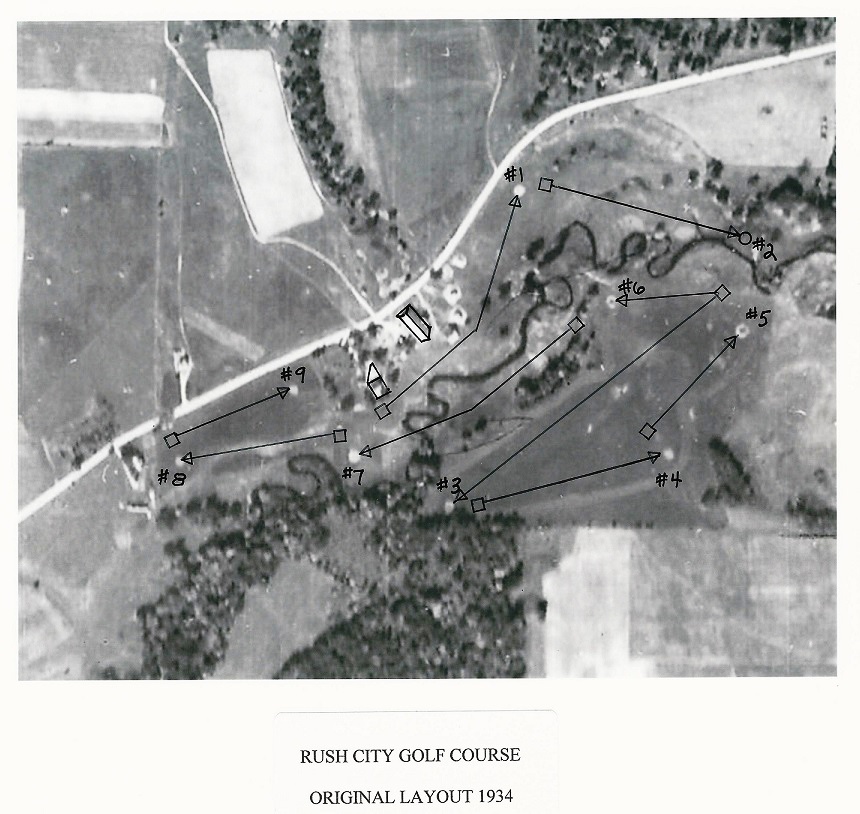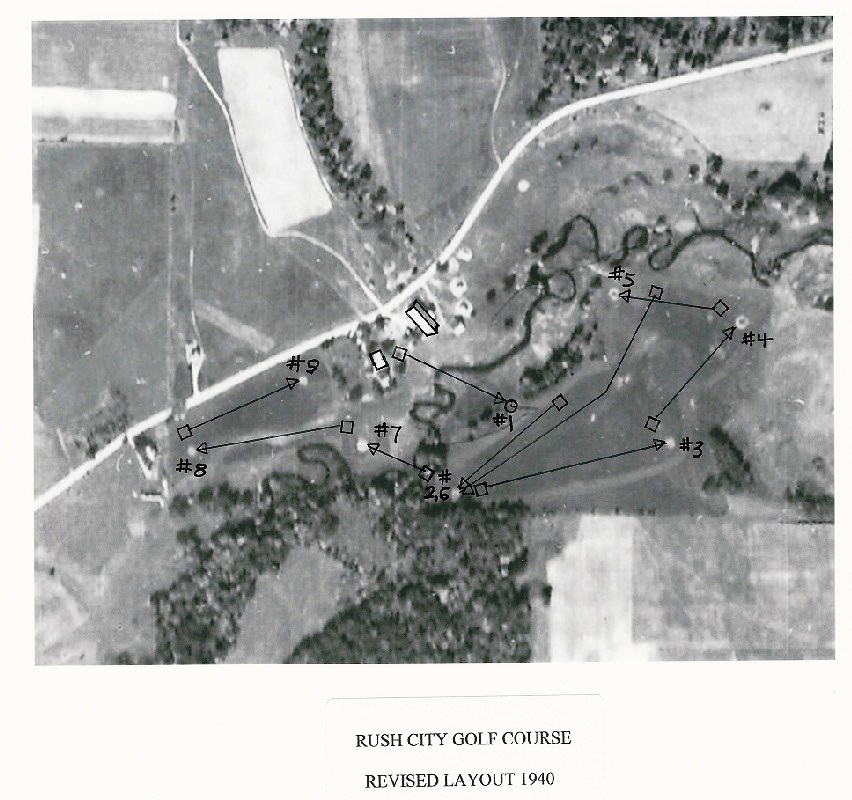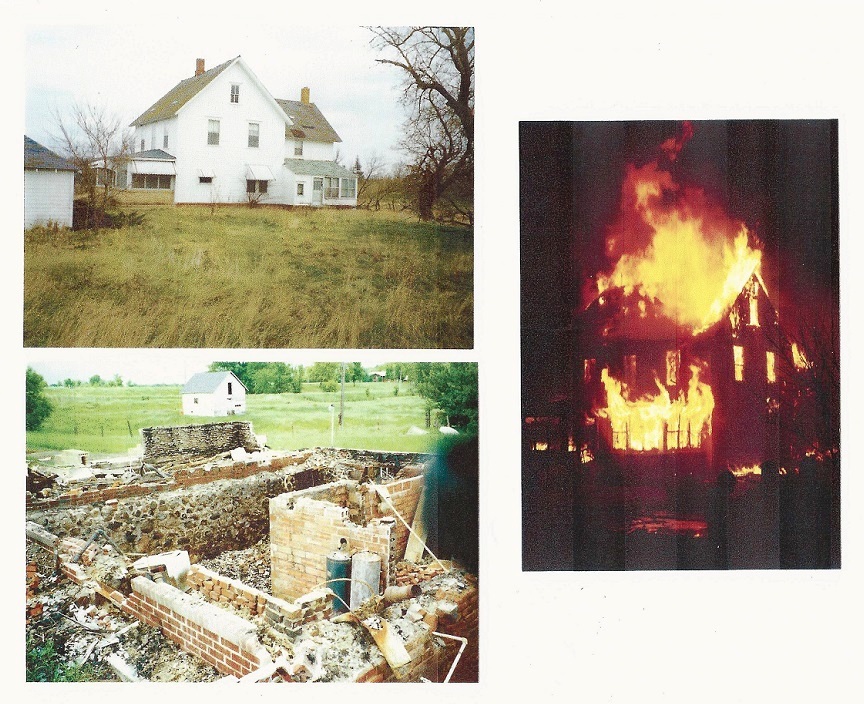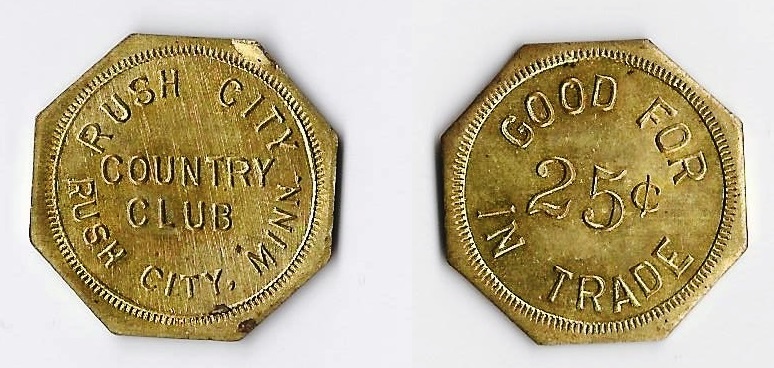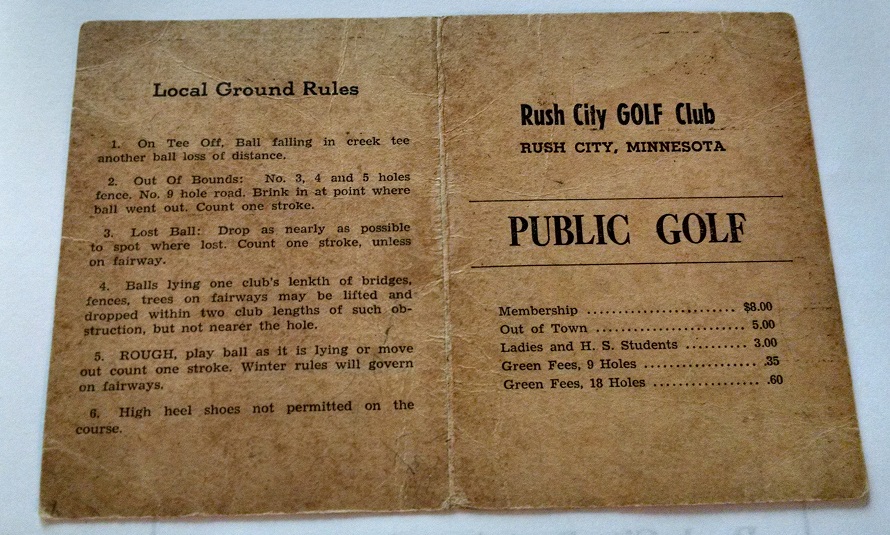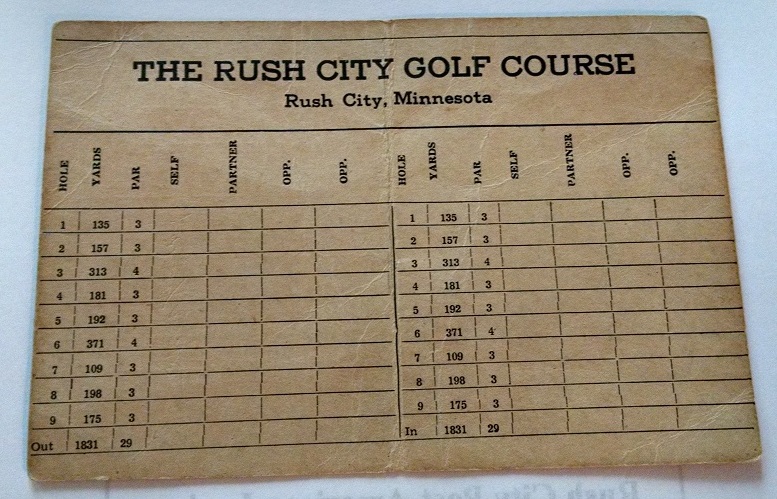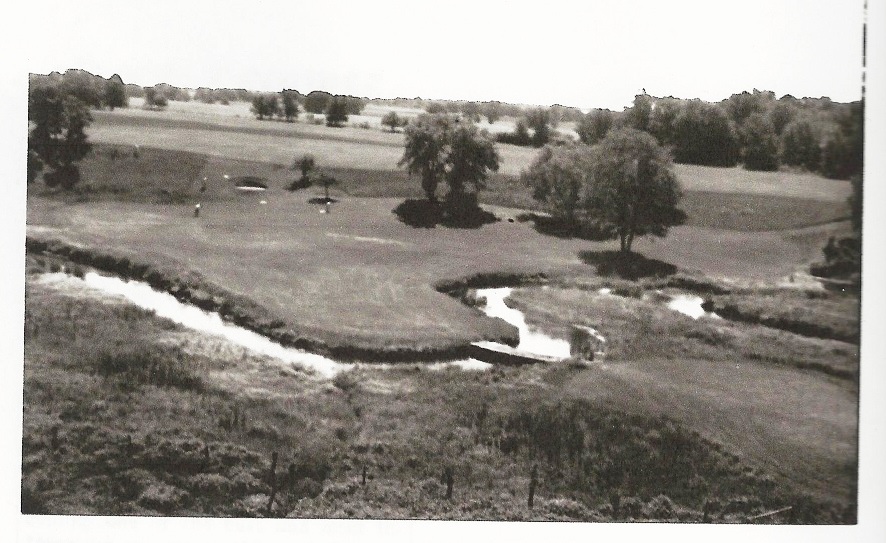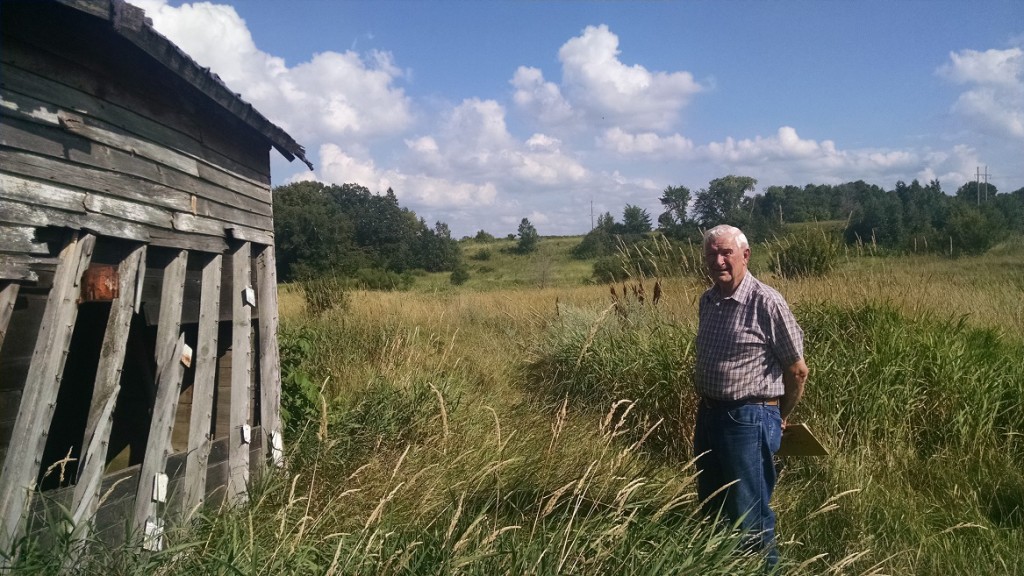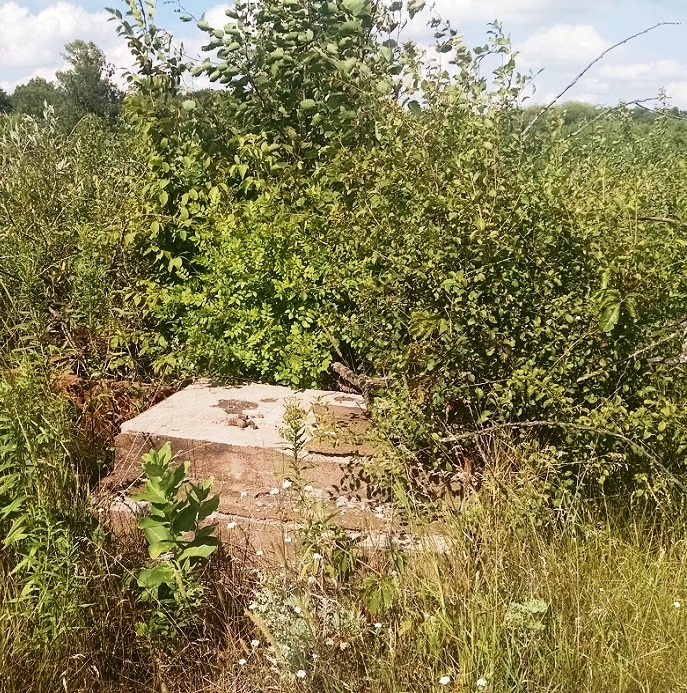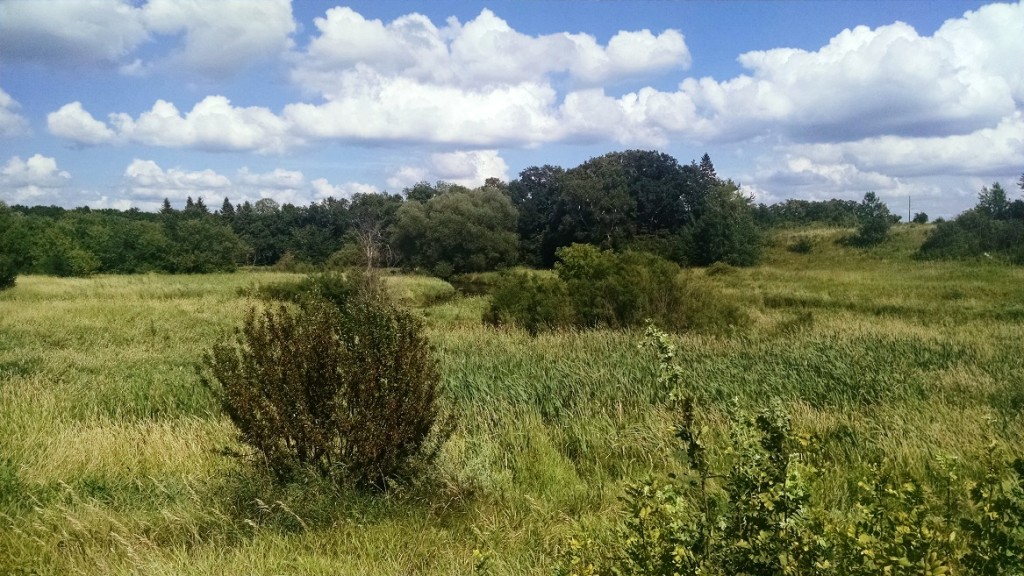In about 1940, by his recollection, Don Johnson clambered up the windmill on his family farm in northern Chisago County and snapped an aerial photograph of Rush City Country Club.
Well, semi-aerial.
The click of the shutter revealed part of the grounds of the now-lost golf course, which can be seen on a post elsewhere on this website (sorry; I can never get the linking function to work properly). One would be hard-pressed to call it an aerial photo, however, since it was taken at approximately the height Wilbur and Orv reached on some of their early Kitty Hawk forays.
Now Johnson has done himself one better.
Well, two.
Johnson, a Lindstrom resident who was responsible for 95 percent of the information in my first post about Rush City Country Club, this week relayed more information on the golf course founded in 1932 by his father, Art, and uncle Bill on their father’s farm a mile east of Rush City. Most notably, they featured a first in my five-plus years of researching
Minnesota’s lost golf courses: a routing of a lost course overlaid onto a vintage aerial
photo.
Cutting to the chase, here are Johnson’s reconstructions, first of the original Rush City CC
layout, then of the layout after it was redesigned in the late 1930s because of water issues in a low-lying area:
Click on the photos for closer, better looks. North is “up” on each. Highway 25 is the white line running northeast, bordering the Johnson farm and the golf course. The current Rush City Regional Airport landing strip is approximately where the large, light rectangular patch is, north of Highway 25. As with all aerial-photo views of lost courses with sand greens, the greens are particularly notable as very light, almost perfectly round circles. Base photos courtesy of Minnesota Department of Natural Resources.
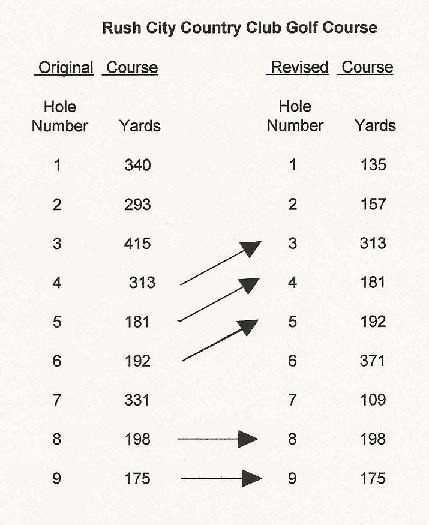 Though it might be folly to make
Though it might be folly to make
judgments off old aerials, what strikes me in these photos is how solid the original routing of Rush City Country Club appears to have been. Pete Carlson, who did the original design (he also designed Moose Lake Golf Club, 50 miles north of Rush City), used Rush Creek particularly well, designing at least three holes, and maybe up to five, using either side of the creek as a strategic element. The second and seventh holes appeared particularly well-designed, and I’ll bet pars on the latter were hard to come by. Given that the course was only 2,438 yards long, and that there likely was no more land available, the original layout appears well-conceived and challenging without offering any noticeably blatant “funky” holes. Only one nitpick: The par-threes were pretty similar in length: 181, 192, 198 and 175 yards.
Wish I could say the same about the revised layout, though the loss of the land that holes No. 1 and 2 were on surely destroyed any opportunity to match the original. The course was shortened by 607 yards and played to a par of only 29, with only three holes longer than 300 yards. Even more notably, holes No. 2 and 6 now shared the same green. “If you saw players approaching playing No. 6,” Johnson said, “you would hold your tee shot off No. 2. Never heard of a problem.”
The course survived until about 1954, Johnson reported, though never regaining the
popularity it enjoyed in the 1930s and early 1940s. I can’t help but think the forced revision of the course into tighter quarters had something to do with that.
In addition to the aerial reconstructions, Johnson, 87, passed along more memories:
“The golf course was developed and maintained with an Allis Chalmers Model U tractor purchased about 1933. This was the first farm tractor in the area on rubber tires. It might have been purchased with the golf course in mind, but Art and Bill Johnson also did custom threshing in the area, which required traveling many miles. The threshing machine also was on rubber for speedy travel at 12 mph.
“Allis Chalmers first added rubber tires to their tractor in 1933. They advertised by
displaying their tractor at the Minnesota State Fair with Barney Oldfield, a well-known race car driver, driving around the race track at 64 mph.
“A pull-behind road grader was acquired to level the greens during construction. The greens were oiled sand which would wash during rainstorms if not very level. The sand was hand screened and oiled with used motor oil. The greens were much softer than grass greens on other courses. …
“The bridges across Rush Creek were built using logs felled along the water. One log felled in the spring was so full of sap it would hardly float. The bridges were covered with
two-inch oak planks. I couldn’t drive a spike without bending it until my father said, ‘Don’t force it, just let the hammer do the work.’ Amazing, but no more bent spikes. …
“Golf clubs of that day had wooden shafts. My first set of clubs were broken discards which were glued together and the shafts wrapped with black linen thread. My first steel-shaft irons were acquired about 142 a $1.65 each. …
“When the clubhouse was operating as a dance hall, I was paid 25 cents a week to pick up empty bottles and keep the beer cooler filled. Sometimes as I walked behind the bar I would sample a bit of tap beer. A dice game called ‘Fourteen’ was played, customer against the bartender, and winners were paid one dollar in merchandise tokens or ‘chips,’ as they were called. These tokens were 25-cent brass-embossed with the Rush City
Country Club name.”
Johnson also passed along three photos of the building that served variously as farmhouse, clubhouse and dance hall. It was destroyed, he noted, in 1991 with a controlled burn by several fire departments.
